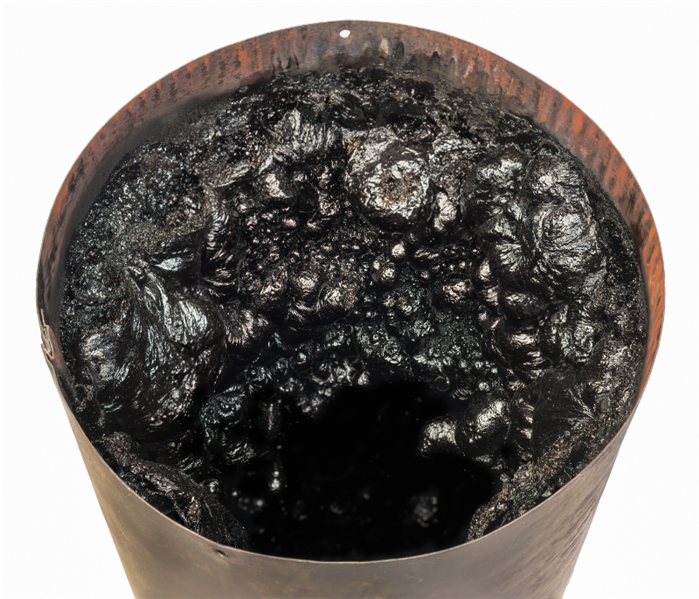Creosote in Chimney: What It Is & Why It's Dangerous
11/12/2020 (Permalink)
 Highly flammable, the buildup of creosote in your chimney can put your home at high risk of a chimney fire.
Highly flammable, the buildup of creosote in your chimney can put your home at high risk of a chimney fire.
If your home has a fireplace or wood stove, you should be educated on creosote buildup in your chimney, as well as the importance of having your chimney cleaned annually. Here, we will explain exactly what creosote is and why you should take steps to minimize its buildup.
What Is Creosote Buildup?
Creosote is a material produced by the by-products of burning wood. The particles, gases, and other chemical compounds produced by a burning fire travel up your relatively cooler chimney, and cause condensation along the chimney liner. This condensation is what then turns into creosote buildup. Once this material begins to build up, it restricts air flow in the chimney and creates conditions for further deposits, making it become worse over time.
Creosote is dangerous because it is an extremely flammable material. A simple spark from your fireplace can light a chimney fire that can spread into your home. This highly flammable substance has different stages as it builds up, with the later stages becoming extremely challenging to remove and even more flammable.
- Stage 1: This is when creosote first forms, and is soft, flaky, and similar to soot. This type can be cleaned with a chimney brush.
- Stage 2: At this stage, the material begins to thicken and harden, becoming shiny and glass like. This stage requires professional removal by a CSIA-certified chimney sweep. The chimney sweep will have to use a power drill with attached rotary loops to remove it from the chimney liner.
- Stage 3: This stage is when the compound is most flammable, becoming concentrated fire fuel. This type of creosote is thick, sticky, and tar like. To remove it, chemicals are needed. If they don't work, the entire chimney liner needs to be replaced by a CSIA-certified chimney sweep.
Signs of Buildup
It's hard to tell when this hazardous material builds up in your chimney flue. That's because it is out of your sight when you look up the fireplace - You would have to get on the roof to see it fully.
Signs of creosote buildup include:
- Reduced draft in fireplace from poor air flow due to buildup
- Fire not fully burning - Leaving behind more wood than ash
- Black soot staining around and inside fireplace
- Darker than normal smoke coming out of chimney
- Can see visible soot buildup
If you notice any of these signs, you should all a professional for a chimney inspection and a cleaning to remove creosote. Never ignore these signs or think that a chimney fire won't happen to you.
How To Prevent Creosote Buildup
There are easy steps that you can take to help prevent the buildup of this flammable material in your chimney:
- Do not burn artificial logs, as they do not burn cleanly and will increase buildup
- Only burn seasoned firewood that has dried for 6 months to a year
- Try and burn as clean fires as possible
- Make sure to leave glass doors open a crack to allow enough oxygen to the fire and encourage a steady draft up the chimney
- Warm up the flue before lighting a fire to reduce buildup. Light a 'torch' of newspaper, not lighting the actual fire until the smoke goes straight up the chimney
- Be sure to have your chimney annually cleaned and inspected to reduce risk of buildup and a fire
Taking these steps can protect your home from a devastating chimney fire. It's a good rule to not use your fireplace at all for the season until it has been serviced. It doesn't take much for creosote to catch fire in your chimney - So it's always better to be safe than sorry.





 24/7 Emergency Service
24/7 Emergency Service